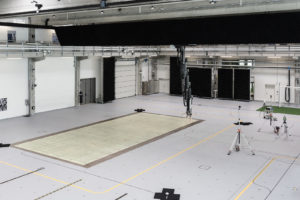As a direct result of Industrie 4.0, industrial production is becoming increasingly customized. And industry’s long-term goal is batch size one. In practice, however, digitalization still frequently means individual solutions that are only partially connected or not connected at all. As a consequence, neither subsequent processes nor advance planning can benefit from data recorded. To facilitate the linking up of production processes, the exchange of application-specific data and the optimization of procedures, the Fraunhofer Institute for Integrated Circuits IIS in Nuremberg is working on developing identification, localization and communication technologies for cognitive sensors and systems.
 “Cognitive sensors enable digital transformation to be realized,” explains Prof. Albert Heuberger, executive director of Fraunhofer IIS. “Cognitive systems are the nerve cells of the industrial Internet of Things (IIoT). They not only record measurements, they also evaluate them, take decisions by reaching intelligent conclusions and forward this information as and when needed. Fraunhofer IIS supplies concrete solutions for wireless communication and localization in the entire IIoT and IoT environment. Cognitive sensors also use and integrate machine learning to provide the right data at the right time and place for the right application.”
“Cognitive sensors enable digital transformation to be realized,” explains Prof. Albert Heuberger, executive director of Fraunhofer IIS. “Cognitive systems are the nerve cells of the industrial Internet of Things (IIoT). They not only record measurements, they also evaluate them, take decisions by reaching intelligent conclusions and forward this information as and when needed. Fraunhofer IIS supplies concrete solutions for wireless communication and localization in the entire IIoT and IoT environment. Cognitive sensors also use and integrate machine learning to provide the right data at the right time and place for the right application.”
Intelligent containers order supplies autonomously
On the one hand, it is important that workers always have the parts they need ready to hand and that the production line does not grind to a halt due to lack of supplies. On the other hand, a surplus of assembly parts not immediately needed would push up warehouse costs. Researchers have developed a customized solution for this in the shape of intelligent containers that know their exact location, monitor their status and detect when supplies are running low and automatically order parts. These containers communicate via s-net® technology that was also developed at Fraunhofer IIS. They send messages by radio to one another and the infrastructure, creating a communication network. Assembly workers receive relevant information on a dynamic display when, for example, the full container on order should arrive. The data recorded by the containers is collected in a cloud where it is available for Big Data analyses. Also, inductive near-field positioning technology detects whether the worker has taken a part from the right place and indicates where they can find the next required component.
Light signals guide the worker through the maze
Workers do not only need small parts like nuts and screws which are kept in such containers, they also need larger parts which are stored on warehouse shelves. To keep storage space to the absolute minimum, spaces are allotted flexibly as they are needed. This means that parts are never put in the same place. Instead, the worker is guided by a light signal to the shelf where the required part is waiting. Conventional pick-by-light systems, however, either require a cable connection, which makes them difficult to install, or they have a short battery life. In the Pick-by Local-Light (PbLL) project, researchers are developing a new kind of picking system based on wireless sensor networks. The underlying technology employed here is also s-net®.



